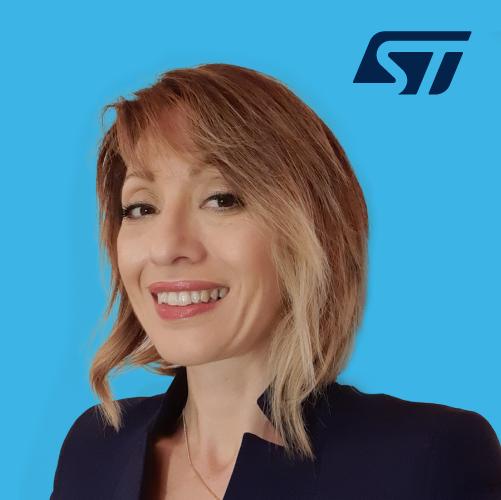

With Maker Learn Festival RELOADED the training continues!
From November 14-18th learn the latest in technology and hone your maker skills from the comfort of your home with Maker Faire Rome’s annual Make Learn Festival. With over 50 training proposals from our partners and makers. Workshops, talks, webinars dedicated to innovation: from artificial intelligence to robotics, from recycling to upcycling; from digital manufacturing to sustainability, and much more. There are also courses for children and teenagers!
We checked in with the amazing Maker Faire Rome producers–fresh off their October 7-9th event in Rome’s historic Gazometro–for content recommendations for an international audience. Note that while these talks are in English, if English participants join there will be translation where possible. Find out more on the Maker Faire Rome website HERE. Access events you missed on the Maker Faire Rome YouTube channel after the event!
CHECK OUT THE FULL SCHEDULE
THE PROGRAM 101: WE CHALLENGE THE FIRST DESKTOP COMPUTER OF HISTORY – ONLINE WITH ITS INVENTOR!
The Programma 101 is the first desktop computer of history. It represents the Fondazione Natale Capellaro – Laboratorio Museo Tecnologic @ mente di Ivrea. The computer will be turned on and the Angela Game program will be inserted, a challenge game between person and machine, the first game in history. Online there will be its inventors, Gastone Garziera and Giovanni Desandre (Pier Giorgio Perotto’s team) who will tell the incredible story of the computer and then invite people to play.
Wednesday 16 November
From 10.45 am to 11.45 am CET

ARTIFICIAL NEURAL NETWORKS ON MICROCONTROLLER WITH X-CUBE-AI
X-CUBE-AI is a software package, part of the STM32CubeMX tool, which allows you to automatically convert pre-trained artificial intelligence models, both neural and classic machine learning models, into code to be executed on STM32 family microcontrollers. X-CUBE-AI allows you to integrate the library generated within the user project and allows you to validate the Artificial Intelligence algorithms both on the PC and on the STM32 microcontroller, this phase takes advantage of the automatic generation of performance measurements that support the correct integration of the artificial intelligence algorithm on the microcontroller.
Ivana Guarneri obtained the Master’s Degree in Computer Engineering in 2002 at the University of Palermo. You have been working at STMicroelectronics since June 2002 in the System Research and Applications group. You have worked in various research areas, currently you are involved in the development of Artificial Intelligence solutions for Audio Speech Processing @edge such as Keyword Spotting and Vocal Commands Recognition. She is the author of several patents and articles.

BUILD YOUR AMR WITH ROS2 AND ROS2_AMR_INTERFACE
Pizza Robotics
In this workshop you will learn how to build an AMR (Autonomous Mobile Robot) using the new package “ros2_amr_interface”. You will also learn how to write a firmware in Arduino to interface your hardware to ROS2!
Wednesday 16 November
Slab 12.00 to 13.00 CET
THE “ELECTRONIC NOSE” BME688 – DIGITAL ENVIRONMENT SENSOR WITH INTEGRATED ARTIFICIAL INTELLIGENCE
Arrow Electronics Italy
The Bosch “Electronic Nose – BME688” is the first recognition sensor of volatile organic compounds (VOC), volatile sulfur compounds (VSC) with Artificial Intelligence (AI) and integrated pressure, humidity and temperature sensors with high linearity and high precision. The instrument is able to learn the characteristics of VOCs and VSCs thanks to the analysis of the molecules present in the air. After recognizing and storing the information, the sensor will, in the future, be able to recognize it.
The BME AI Studio tool allows you to train the sensor according to the specific application. The small package and low power consumption allow it to be used in mobile and connected applications, such as household appliances, IoT products and Smart Homes.

Giovanni Cambareri graduated in Electronic Engineering from the University of Brescia in 2018, also attending the Polytechnic University of Valencia for one semester. He has worked as R & D Hardware and Firmware Engineer in the industrial sector and in the household appliance sector. He currently holds the position of Field Application Engineer in Arrow Electronics
Thursday 17 November
From 10.00 to 11.00 CET


PHYSICS WITH ARDUINO AND SMARTPHONE
Sapienza – Saperi&Co
In this presentation, we will illustrate the possibilities offered by Arduino and smartphones in physics education, in schools and universities. Many training events were already organised throughout Italy for teachers, which one can attend to learn, in just a few days, how to design and carry out experiments with these tools.
JOHN ORGANTINI
Giovanni Organtini is professor of experimental physics at the Sapienza University of Rome. He worked on the L3 experiment at LEP. He later joined the CMS collaboration at the LHC with which the Higgs boson was discovered in 2012. He is also a member of the PADME collaboration aiming at the possible detection of dark photons. He was director of the Physics Museum in Rome for five years. Giovanni Organtini is internationally recognized among the leading experts in the use of accessible digital technologies to perform physics measurements in the educational field, and he invented the Physics Schools with Arduino and Smartphones, which have been held in Italy and abroad. He is very active in the dissemination of physics, also through innovative media such as FISICAST: a podcast on physics in Italian.
Thursday 17 November
From 14.30 to 15.30 CET
HOW TO BUILD YOUR AUTOMOTIVE PROTOTYPE WITH AUTODEVKIT
AutoDevKit ST is an integrated development ecosystem for rapid prototyping of automotive and transportation applications.
It is a simple and free tool that reduces prototyping time, aimed at engineers who develop automotive applications
and implement complex embedded systems. The main advantages of the AutoDevKit approach are:
• Fast prototyping: AutoDevKit provides integrated hardware and software components, ensures the interoperability of the components and facilitates the configuration of the microcontroller boards and peripherals used.
• Flexible solution: a system solution can be created from a pre-existing one by simply adding dedicated cards for new purposes and/or removing unused cards.
• Hardware abstraction: AutoDevKit allows, without any code modification, to be able to switch from one microcontroller to another among those supported in order to satisfy the requested application requirements.
To date, the microcontrollers supported by AutoDevkit belong to the 32-bit SPC58 family from STMicroelectronics.
Thursday 17 November Slab 15.30 to 16.30 CET

Guido graduated in Electronic Engineering at the University of Catania. He has been with ST since 2002, where his first job was Application & Characterization Engineer in R&D. From 2010 to 2019 he worked in the Tradeshows & Events team, supporting the promotion of ST products in exhibitions around the world and weaving a dense network of contacts with colleagues all over the world. Since 2019 he has been working in the Automotive sector, where he deals both with the analysis of the Mass Market and Distribution business in EMEA, and with the online promotion of ST products and solutions in the automotive sector.

Luca Russotti is Senior Automotive Software Architect Engineer in the Automotive Discrete Groups (ADG) – STMicroelectronics and has held this position since September 2019. Luca was born in Catania, Italy, in 1985, and graduated cum laude in Automation and Control Engineering of Complex Systems at the University of Catania, Italy. He is a member of the AutoDevKit tool development team: a simple, low-cost, optimized tool for developers facing the challenge of evaluating, prototyping, and deploying complex automotive and transportation embedded systems.

Giuseppe Nastasi received his master’s degree in electronic engineering in 2003 at the University of Catania. In the same year, he started working for STMicroelectronics and is currently part of the System Research & Applications organization, as a senior application engineer and project leader. During his career he has dealt with: USB type-c protocols and power delivery, power management, fuel cells, environmental and gas sensors. He currently works for the development of applications for asset tracking and in the field of the Internet of Things. He has worked on many European research projects and has been the author of technical articles and numerous patents.
LEARN MORE Friday 18 November 10.00 to 11.00 CET
ASTRA, THE ST SOLUTION FOR LOCALIZING YOUR ASSETS
Many industrial IoT applications need solutions for tracking assets in buildings, facilities and warehouses, as well as in outdoor locations. Integrated multi-connectivity platforms derive location information from mixed connectivity technologies, depending on the context. ASTRA is a hardware and firmware solution that supports short and long range multi-connectivity such as Bluetooth® Low Energy, LoRa and other proprietary protocols. The platform integrates ST’s latest technologies and all the features necessary for the development of a complete asset tracking application, including: microcontrollers, NFC connectivity, security element, GNSS module and a complete set of motion and environmental sensors. Power management is optimized, both on the hardware and firmware side, to ensure battery life in real application scenarios. The resource tracking ecosystem is end-to-end and includes a mobile app and a cloud dashboard

3D PRINTING IN SPACE – NEW SCALABLE OPTIMIZED METHOD
Rui Pires
3D printing in space is a big challenge, over the past two years I have been trying, building and testing a new concept for 3D printing that is perfectly suited to the production needs that are addictive to space. let’s talk about
Inventor always working in development and creative area, creation of solution for problems. He studied areas like music, artistic production, multimedia and information systems, auto parts management, and lately studying a masters on industrial engineering. Speaker at advanced manufacturing for air ,land and space ICAM2022 organized by ESA and NASA
LEARN MORE Friday 18 November 17.00 to 18.00 CET



Cover image // Creator: Matteo Minnella | Credit: Matteo Minnella / A3 / Contrasto
ADVERTISEMENT






